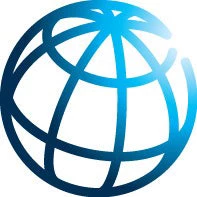Estimates of gross national income (GNI) for 2009, released on 1 July, show that the share of developing regions in the global economy increased from 18 percent in 2000 to 28 percent in 2009. On a purchasing power parity (PPP) basis their share increased from 34 to 44 percent with China still remaining the second largest economy, after the United States. Brazil, Russia, India, and Mexico are among the 15 largest economies in the world.
Developing countries have increased their role in the global economy by growing faster than rich countries, on average 6.3 percent per year compared to only 2.0 percent for high income countries over the 2000 to 2009 period, but the difference between rich and poor countries remains large. The average income per person in a high income country is over $38,000 per year – more than 13 times that in developing countries.


GNI is the value of a country’s gross domestic product (GDP) and net income from abroad. The average income of a country’s citizens, measured by GNI per capita is a good first step toward understanding their productivity and standard of living. GNI per capita tends to be closely linked with other indicators that measure the social, economic, and environmental well-being of the country and its people.
Country classifications
For analytical purposes the World Bank uses GNI per capita to classify economies as low income, middle income, or high income. Low-income economies are those with an income of $995 or less in 2009; lower middle income, $996 - $3,945; upper middle income, $3,946 - $12,195; and high income, $12,196 or more. Low- and middle-income economies are commonly referred to as developing economies. However this does not imply that economies in the same income group have reached similar stages of development or that high-income economies have reached a preferred or final stage of development.
Another important use of the GNI per capita is the operational classification of countries by their lending eligibility. The threshold for International Development Association (IDA) eligibility is an average income of $1,165 or less in 2009. IDA credits are deeply concessional—loans with a low service charge and long repayment terms or grants for programs aimed at boosting economic growth and improving living conditions. Countries with average incomes of $995 or less are also allowed to offer preference to national suppliers when procuring certain goods and services. This is the so-called “civil works preference.”
Creditworthy countries that remain above the IDA threshold for three years start “graduating” from IDA and may begin borrowing from the IBRD. IBRD loans are nonconcessional. Creditworthy countries remain eligible to borrow until they graduate from IBRD. Planning for graduation begins after countries cross the IBRD threshold, now set at a 2009 average income of $6,885.
Some countries are able to draw on financing from both IDA and IBRD. These are the so-called “blend” countries. Some small island states are accorded blend status because of the intrinsic difficulties they face in sustaining their development. Other blend countries have crossed the IDA threshold but are not yet creditworthy for IBRD borrowing, while a few countries below the IDA threshold are creditworthy and obtain financing from both IDA and IBRD.
A listing of countries by operational classification is available in Annex D.
Changes in classification
The classification tables include all World Bank members, plus all other economies with populations of more than 30,000. This year’s tables include Tuvalu, Gibraltar, and Turks and Caicos. Tuvalu joined the World Bank on 24 June 2010 as the 187th member. Gibraltar and Turks and Caicos Islands now have populations over 30,000. The complete listing of classifications is located at the Bank’s income classification page. The following table summarizes the changes:
| Economy | July 2009 Classification | July 2010 Classification |
| Albania | Lower middle | Upper middle |
| Antigua and Barbuda | High | Upper middle |
| Azerbaijan | Lower middle | Upper middle |
| Gibraltar | .. | High |
| Iran, Islamic Rep. | Lower middle | Upper middle |
| Latvia | Upper middle | High |
| Poland | Upper middle | High |
| Senegal | Low | Lower middle |
| Solomon Islands | Lower middle | Low |
| Turks and Caicos Islands | .. | High |
| Tuvalu | .. | Lower middle |
| Uzbekistan | Low | Lower middle |
| Vietnam | Low | Lower middle |
| Yemen, Rep. | Low | Lower middle |
Tables with 2009 GDP, GNI, and GNI per capita data are now available on the World Bank’s Open Data site (link). For more information please the World Bank country classification site or send an email to data@worldbank.org.


Join the Conversation